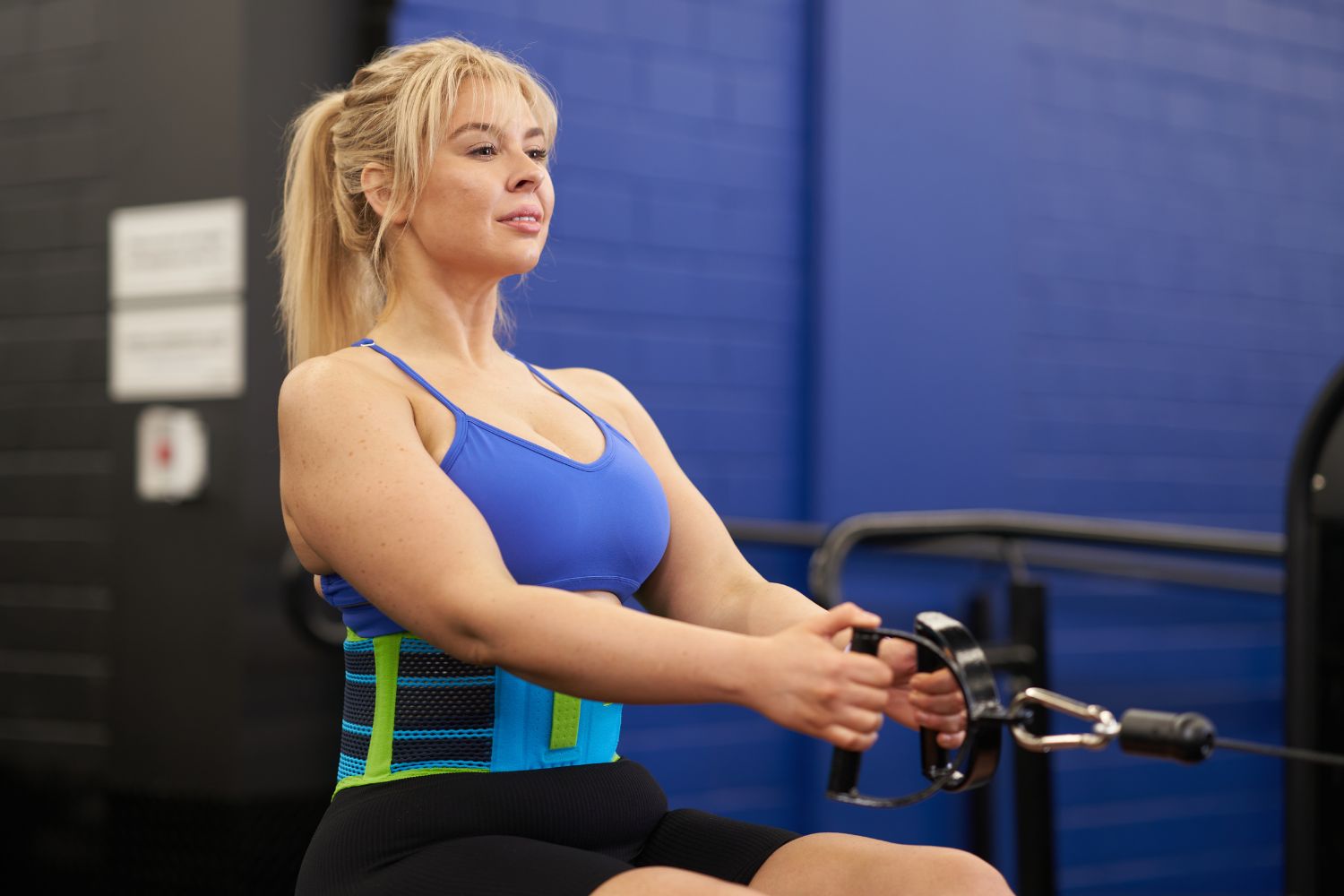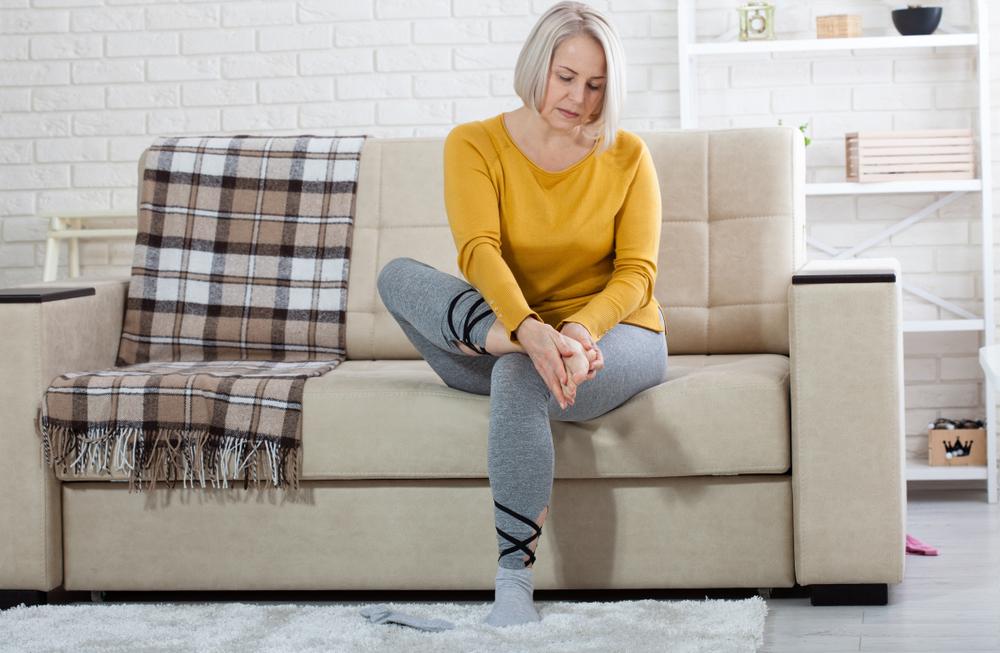80% of adults get back pain at some point in their lives. And in 20% of cases, this pain can become chronic. Fortunately, there are steps you can take to manage your chronic pain and its underlying causes. And one of the best ways to do so is wearing a back brace.
Common chronic back pain causes
Understanding the underlying cause of chronic back pain is the first step in addressing it.
Herniated disk: Spinal disks sit between your vertebrae and cushion against shock. However, due to gradual degeneration or acute injury, some of the nucleus ‘gel’ inside the disk may slip out of the annulus ‘rind’ and start pressing into the nerve column, resulting in pain.
Arthritis: There are two main types of back arthritis: inflammatory (psoriatic, reactive, and axial spondyloarthritis) and degenerative (osteoarthritis). In the former, an infection in the lower torso or an immune system malfunction causes swelling, stiffness, and pain in spinal joints. In the latter, gradual wear and tear of the cartilage between spinal joints causes bone-on-bone contact. It may also cause bone spurs to develop that press into the spinal column, causing pain and nerve issues like numbness and weakness.
Spinal stenosis: The canal in your spine housing nerves narrows, typically as a result of arthritis or injury. As the nerves get compressed, the condition results in pain, numbness, tingling, or weakness.
Facet joint damage: The facet joints are bony protrusions running along the outer spine. They may become damaged through arthritis or acute injury. As these joints play an essential role in spinal movement and stability, damage may result in chronic back pain and a ‘locking’ sensation. As the joints have a nerve supply, you may also experience burning and referred pain.
Compression fracture: Here, a vertebra develops cracks. Usually, this is the result of osteoporosis, but it can also happen with trauma.
Other causes of chronic back pain include a nerve nicked during a surgical procedure or a poorly/improperly healed soft tissue injury.
In short, chronic pain develops when nerves are distressed, whether through compression, direct damage, or damage to surrounding tissues. And because some conditions can’t be healed (arthritis), take a long time to heal, or get repeatedly interrupted as they heal, the nerves keep firing pain signals.
Back brace for back pain: the benefits
Chronic back pain can be challenging to manage. Fortunately, a good back brace can help relieve it and improve function.
Reduce pressure

LumboLoc Forte
Chronic back pain often stems from pressure. You may feel better when lying down or reclining. You may also feel worse when carrying something heavy, bending down, or sitting, as these activities place a higher load on spinal structures (especially in the lower back).
Soft back braces like the LumboTrain do so through compression knit. The knit helps you activate your trunk muscles more efficiently and effectively to support the spine.
Semi-rigid braces like the LumboLoc, meanwhile, combine compression knit with a system of stays. And in the case of the LumboLoc Forte, an additional support belt. The stays and belt work with your muscles to maintain good posture, helping you avoid overloading a herniated disk or degenerated facet cartilage.
Some braces (like the SacroLoc) also have a strap system that lets you adjust and offload pressure away from a painful area.
Stabilise the spine
Many of the conditions behind chronic pain can result in spinal instability. Instability may result from direct damage to stabilising structures like facet joints and ligaments or indirectly through a misfiring nerve that makes it harder for your back muscles to work properly.
As we mentioned, the compression knit helps activate your trunk muscles. It communicates with muscle fibres, allowing the nerves to send and receive signals to and from the brain. With the nerves and muscles working better, your spine gets more stability from its natural internal support network. Stays and straps, meanwhile, provide extra external stability.
Massage away muscle tension and pain
Many of our back supports combine compression knit with sacral or lumbar padding.
- Compression knit has the unique benefit of boosting circulation, warming up the muscle and helping reduce muscle tension and associated painful spasms and ‘pulls’ on damaged tissues.
- Compression knit also works with viscoelastic padding to massage painful areas as you move.
Support through movement and exercise
Thanks to their ability to reduce pressure and support the back muscles, back braces can support you through daily movements and exercises to avoid further damage and pain flare-ups. Remember, immobility is often the last thing a painful back needs. Even after acute injuries and surgery, clinicians want to get you up and about as soon as possible to maintain muscle strength and overall flexibility.

SacroLoc Back Brace
Learn more about the role of Bauerfeind Back Braces in managing back pain.
Other ways to relieve chronic back pain
A back brace is an essential tool for managing chronic pain, but for the best results, combine bracing with other pain relief methods.
- Exercise to strengthen the core, glutes, and upper back so your spine has a great support network
- See a physio to help improve mobility, reduce tension, and create an exercise plan tailored to your condition.
- Make some activity and lifestyle modifications. Key among these are taking breaks during long stretches of sitting, creating an ergonomic workspace, working on your posture, avoiding activities that aggravate the pain, and practising good lifting.
- Ask your doctor about pain relief medications. Note: An active approach will lead to better results than passive pain relief through medicine. However, over-the-counter medications and prescribed injections are generally effective for temporary relief.
To sum up
As back braces relieve pressure, massage painful areas, provide stability, and help keep you active, they’re an excellent remedy for chronic pain. Just be sure to get a quality back brace suited to your condition, and combine bracing with exercise, modifications, and physiotherapy for the best results.
If you require assistance selecting the right product for your needs or wearing the brace, call us on 098015660 or contact us via live chat.
Do you have private health? Most private health extras will cover Bauerfeind Products. Check to see if yours is included. Bauerfeind Private Health Insurance Inquiry.
















